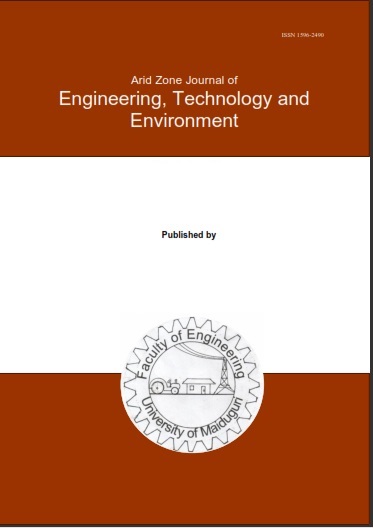Abstract
Nutrient losses from agricultural fields are significantly influenced by fertilizer management practices and rainfall patterns. Gaining insight into these effects supports the development of effective mitigation strategies. This study investigated the effect of rainfall and fertilizer application timing on nutrient export from a maize field. Daily rainfall data were obtained from Ogun-Osun River Basin Development Authority (OORBDA) meteorological station at Igboora. The field experiment included early, split, and late single fertilizer application treatments, specifically assessing their impact on nitrate loss. Runoff from each treatment plot was collected using plastic gutters leading to wooden tanks. Samples were manually drawn at the onset, midpoint, and conclusion of each runoff event, provided rainfall exceeded 10 mm. Runoff samples were analyzed for sediment concentration using gravimetric techniques, while nitrate, ammonium, total dissolved nitrogen, and total dissolved phosphorus were measured using standard colorimetric methods. Rainfall events ranged from 29.7 mm to 393.8 mm. The analysis revealed that nitrate concentrations in runoff averaged 35.3±20.55 mg/L, ranging from 5.67 to 78.41 mg/L. Early fertilizer application resulted in an increased average nitrate concentration of 41.4 mg/L. In terms of sediment-bound nutrients, particulate phosphorus concentrations averaged 10.09±7.17 μg/g, with values between 0.37 and 24.09 μg/g. Particulate nitrogen concentrations averaged 13.15 ± 7.87 μg/g, ranging from 3.07 to 31.04 μg/g. Also, it was observed that fertilizer treatments led to an increase in particulate phosphorus concentrations, averaging 10.83 μg/g after the initial application. The observed influence of rainfall and fertilizer timing on multiple nutrient pathways highlights the need for integrated nutrient management strategies, especially in tropical agro-ecosystems.

This work is licensed under a Creative Commons Attribution-NonCommercial-NoDerivatives 4.0 International License.
Copyright (c) 2025 ARID ZONE JOURNAL OF ENGINEERING, TECHNOLOGY AND ENVIRONMENT

